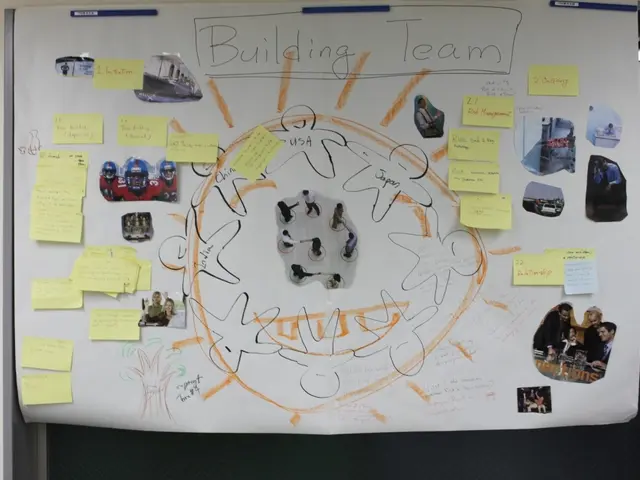Sleep Disturbances at Various Ages in Infants
Struggling with your baby's sleep might feel like an endless maze. Just when you manage to decode one pattern, a new challenge emerges – frequent nighttime awakenings. This phase is known as sleep regression, a common and perplexing hurdle during infancy.
To gain a better understanding of sleep regression, its causes, common stages, and coping strategies, read on.
Understanding Sleep Regression
Sleep regression refers to a sudden change in a baby's sleep patterns, often disrupting their slumber after previously sleeping soundly [1]. Babies going through sleep regression may have difficulty falling asleep at night or even during naps.
Sleep regressions are part of a baby's developmental milestones, most commonly observed at 4 months, 8 months, 12 months, 18 months, and 2 years of age [2].
The first sleep regression at 4 months is often triggered by developmental changes, teething, or growing pains [2].
Factors That Contribute to Sleep Regression
Although the exact cause remains unclear, several factors contribute to sleep regression:
- Neurodevelopment and Maturation: As the brain grows more active, the increase in cognitive and physical abilities can disrupt sleep patterns.
- Separation Anxiety: Awareness of surroundings may lead to anxiety and difficulty self-soothing when caregivers are absent.
- Changes in Routine: Moving to a new environment, starting daycare, traveling, or other disruptions can lead to sleep disturbances.
Common Sleep Regression Stages
Sleep regressions occur during a baby's early growth stages, starting from as early as 4 months to 2 years of age. Below are details about each stage:
4-month sleep regression
Babies experiencing 4-month sleep regression are undergoing rapid growth. As their sleep patterns shift towards more adult-like cycles, it may take time to adjust, leading to sleep regression [1][4].
8-month sleep regression
Crawling, teething, and separation anxiety are common at this stage, disrupting regular sleep patterns [2].
12-month sleep regression
As babies learn to stand or walk with support, they develop increased curiosity and may prioritize exploration over sleep. Changes in routine such as starting daycare or a new sleep schedule may also contribute to sleep disruptions.
18-month sleep regression
Increased autonomy and decision-making abilities can lead to a preference for play over sleep [3].
2-year sleep regression
Tantrums, expressing stronger wants and needs, and the beginning of potty training can cause sleep regression at 2 years [3].
Recognizing Sleep Regression
Sleep regression takes various forms:
- Waking up frequently at night
- Difficulty falling asleep
- Resistance to naps or bedtime
- Increased fussiness or irritability
- Changes in appetite or mood
Managing Sleep Regression
To overcome the challenges posed by sleep regression, here are some strategies parents can employ:
- Implement a consistent sleep schedule to regulate the child's internal clock.
- Engage in calming activities like warm baths, reading bedtime stories, or listening to gentle music before bedtime.
- Create a comfortable sleep environment, ensuring the room is dark, quiet, and equipped with a comfortable mattress.
- Use white noise or soft music to mask disruptive sounds and help babies fall asleep.
- Practice patience and consistency, and stick to the established routines.
If sleep disruptions persist for over a month, consult a pediatrician. Additionally, seek professional help if you notice extreme irritability, excessive fatigue, difficulties focusing, signs of sleep apnea, or growth, development, or well-being issues.
Ultimately, remember that sleep regressions are temporary and an integral part of a baby's development. By following best practices and remaining patient, you can help your baby return to a stable sleep routine. If you're looking for tips, sleep sounds, or bedtime stories to promote better sleep, consider ShutEye, a sleep-tracking app that offers insights for improving your sleep.
[1] National Sleep Foundation: What's Normal for Sleep Patterns in a 4-Month-Old? (2021).
[2] The Sleep Authority: When Does Sleep Regression Happen and How Can I Get My Baby Back to Sleep? (2019).
[3] Baby Center: Sleep Regression - What is it and how to deal with it? (2013).
[4] American Academy of Sleep Medicine: Understanding Your Child's Sleep (2019).
[5] WebMD: 6-Month Sleep Regression – Why Is My Baby Waking Up? (n.d.).
- Despite aiming to tackle sleep issues, parents might encounter additional challenges, such as sleep apnea, due to their infants' growth spurts and development milestones.
- Furthermore, insomnia can be a symptom that families should watch out for during the sleep regression stages, particularly when the baby exhibits increased fussiness, irregular appetite, or inconsistent mood.
- To better address health-and-wellness concerns related to sleep regression, parents are advised to consult science-based resources and pediatricians, seeking guidance on appropriately managing sleep disruptions and ensuring their baby's overall well-being.







